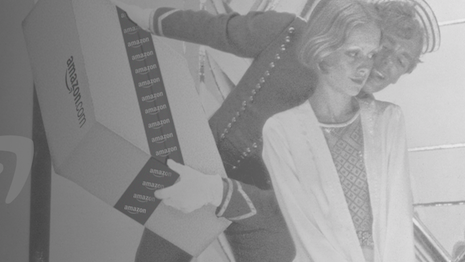- About
- Subscribe Now
- New York,
September 5, 2017

 Thousands of third-party sellers undercut fashion brands with gray market sales. Image credit: L2
Thousands of third-party sellers undercut fashion brands with gray market sales. Image credit: L2
Amazon is set to eclipse Macy’s as the largest seller of apparel in the world by the end of 2017, making it an area of priority for anyone in the fashion industry.
While much of the apparel sold on Amazon is from mass brands or Amazon’s own Amazon Essentials brands, a new report from L2 shows that there are thousands of so-called “gray market” options for consumers to buy luxury apparel from unauthorized third-party sellers. In addition, Amazon may be looking to get into more luxury fashion with such elements as Prime Wardrobe.
Gray market
Amazon is a major player in just about every industry it has entered so far, and fashion is no different.
By the end of the year, Amazon is on track to be the largest purveyor of clothing in the world.
Currently, Amazon gets the most traffic from men, while women prefer to do their online shopping elsewhere. For men, Amazon’s private brands are the most popular, eschewing traditional and legacy fashion brands.
But these outside brands that do not officially partner with Amazon are in danger from a serious threat: gray market sales.
Tory Burch and Rag & Bone are two brands facing a lot of gray market sales. Image credit: L2
Even if a brand does not sell with Amazon officially, the online retailer is filled with third-party sellers making those products available with the original brand not seeing a cut from it at all.
For example, L2 notes that there are currently more than 2,000 listings for a pair of Tory Bruch sunglasses, despite the brand not having any official partnership with Amazon. For this reason, the brands are missing out on the type of quality control and price assurance they can ensure through an official seller.
Brands that enter into a partnership with Amazon have the opportunity to wrest back control of how their products are sold without fear of the deleterious effects that gray market sellers can have on brand image.
Amazon services
Amazon is continuing to undercut the traditional bricks-and-mortar model with the introduction of a try-before-you-buy service.
Amazon’s latest disruption is dubbed Prime Wardrobe and is currently in BETA testing and available only to Prime customers that the retailer has selected to pilot the program. During an era where traditional department stores are facing declining sales and consumer disinterest, Amazon has only upped the ante on its fashion division’s happenings and service programs (see story).
With Prime Wardrobe, Amazon is making fashion shopping online even easier, continuing its foray into the fashion world. It also provides an incentive for fashion brands to partner with Amazon so they can work with the program.
Third-party sales can face serious price fluctuation. Image credit: L2
Additionally, following its release of complimentary two-day, next-day and same-day delivery for Prime members, online retailer Amazon’s latest service makes fulfillment even faster, putting pressure on competitors.
Instant Pickup, launched Aug. 15, allows shoppers living nearby to select Amazon locker locations to pick up their order in just a handful of minutes. While Amazon and luxury retailers largely do not play in the same space, the ecommerce giant shares a large portion of customers with high-end stores and brands (see story).
This service increases the utility of fashion shopping even more and continues to blur the lines between Amazon’s online components and physical shopping.
Share your thoughts. Click here